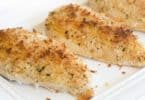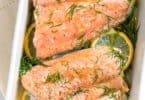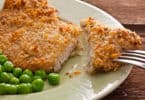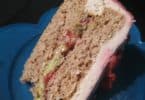Baking, sometimes referred to as roasting asparagus, is relatively easy and makes for a tasty side dish. At times cooks are disappointed by how the asparagus turns out baked but this typically has more to do with how fresh the vegetable was when it was purchased and is not a reflection of the baking technique. Read on for tips on how to purchase and then successfully bake asparagus.
To be sure you end up with a tasty dish; you will want to select the freshest asparagus possible from the store. For every four people that you want to serve, you should buy one pound of asparagus. For green asparagus, make sure the vegetable is bright in color. For the more rarely found white asparagus, make sure the vegetable is white to off white in color. Note that white asparagus requires a little more prep time since the stalks will need to be peeled unless the store has already done so. The spears themselves should snap if you bend them, spears that are too bendable indicate the vegetable is starting to rot. Pay special attention to the tips of the stalks. The tops should be closed and darker in color than the spears; some tips are purplish in hue. Dark green or purple tips indicate a fresh item, yellowing and or flowering tips indicate the asparagus is past when it should be purchased. Stores often place asparagus in water; this is a good sign since it will help retain freshness. Avoid asparagus that is dried out, it will not turn out as flavorful. The width of the spears does not impact the final taste so this is not an important factor when shopping.
To prep at home, start by rinsing the stalks, preferably in a colander. Let the vegetables drain; you can spread out the asparagus in a single layer on paper towels to help speed up the draining time if you are in a rush. Baking or roasting should always be done at a high temperature, so pre-heat the oven to 450 degrees. Technically, a roast is considered anything above 500 degrees but this can destroy the baking pan in the process and does not make a major difference to how the final side dish will turn out. Line a baking sheet with tin foil for easy clean up, if desired. One baking pan typically holds up to two pounds of asparagus. Cut or snap off the bottom one to two woody inches of green asparagus. This can be eye balled but a fresh stalk should break off naturally right above the woody area. Place the vegetable in a single layer across the baking sheet; make sure there is not any overlap between the stalks. At this point, some cooks prefer to drizzle the stalks with extra virgin olive oil or soy sauce. Which flavor to add, or even not adding a flavor at all, is completely up to your individual preference. Alternately, the stalks can be seasoned with salt, pepper, or any other spices that compliment your overall meal. Once the oven has pre-heated, bake the vegetables for 15 minutes. Let it cool slightly but this is a dish best served within 10 minutes or so of baking it. The asparagus can be topped with a white cheese, such as fresh Parmesan or Mozzarella, if desired.
White asparagus is prepared in nearly the same way, however it will need to be peeled and then washed. Follow the same steps listed after washing the green asparagus for an equally tasty side dish. Asparagus is in season from about mid-April to the end of June so you may have the easiest time finding it fresh then. Canned asparagus can be substituted when fresh is not available.







